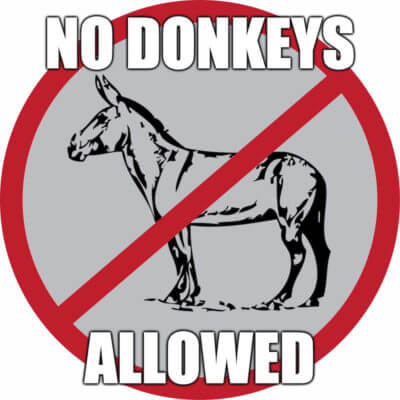Infographic: 11 amazing hacks that will boost your organic click-through rates
Got great content and rankings, but still not getting clicks from organic search? Columnist Larry Kim shares tips and a fantastic infographic on how to improve your organic CTR.

Do you care about your organic click-through rate (CTR)?
You should.
Why?
For one thing, pages that have a higher-than-expected CTR tend to rank higher in search results. Every three-percent increase in CTR beyond the expected for a given organic position will improve your organic rankings, on average, by one position.
For another, pages with higher CTRs tend to have higher conversion rates. If you get people excited enough to click on your search listing, that excitement tends to carry through all the way to a conversion, whether it’s capturing a lead or making a sale.
Do you care now?
If so, this infographic, courtesy of yours truly and the brilliant Brian Dean of Backlinko, shows you how to quickly boost your CTR. (Read on beyond the infographic for bonus insights on the points we cover graphically below.)
Now that you’ve seen the infographic, here are some bonus insights on these subjects that we didn’t have room for.
1. Identify your content with the lowest CTR
Whatever you do, don’t mess with your unicorns. You might accidentally convert them into donkeys, and your pages will suddenly start getting fewer clicks and conversions.
2. Avoid keyword-focused titles
What’s the optimal title tag look like? Traditional SEO advice is to put your primary keyword at the start, include a secondary keyword, and include the brand name at the end.
Boring! These types of title tags don’t inspire ridiculously high CTRs — they will always deliver average results (at best). Just say no to donkeys!
It’s time to break up with old-school, keyword-heavy titles. The future of Google is machine learning, which rewards high CTRs with organic visibility.
3. Use emotional triggers
Emotions make people click like crazy. So if you want to dramatically increase your CTR, use an emotional hook. Refer to the image in the infographic for ideas on the kinds of emotions you might strive to evoke.
For example, an SEO-focused title might look like this: “Late Screen Breast Cancer: 10 Things You Need to Know.”
But look what happens if we rewrite it with some emotion (fear): “With Late Breast Cancer Diagnosis, Survival Rate Falls to 22% — Get Screened Today.”
The more emotional headline is more attention-grabbing, meaning that CTR is likely to improve.
4. Write in persona
Are your headlines relatable? Sometimes it’s difficult to drop the corporate-speak and adopt a voice that will inspire customers to respond.
To break the writers’ block, try putting yourself into the shoes of someone who has a relationship with the consumer. Imagine being the reader’s “frenemy,” a concerned older sibling, or perhaps the life of the party. Doing so can help spark creativity, which can lead to more click-throughs.
5. Use a numbered list
Ah, listicles.
- 18 Photos That Won’t Make Sense To Sisterless Families.
- 10 Things You Learn From Being Raised By A Strong Mother.
- 5 Reasons You Clicked This Headline.
You know them. You love them. You click on them.
That means you should use them. As described in the infographic, research from Conductor found that numbers in headlines boost CTR by 36 percent!
6. A proven formula for super-clickable headlines
One of my earlier Search Engine Land articles shared five headline hacks for crazy high organic click-through rates. I encourage you to click on that link for a more detailed discussion about each of these headline elements. See below how I applied this formula to the headline of this piece (and you clicked on it, right?):
- Format (e.g., “11”)
- Emotional hook (e.g., “Amazing”)
- Content type (e.g., “Hacks”)
- Promise (e.g., “That Will Boost Your”)
- Topic (e.g., “Organic Click-Through Rates”)
7. Add power words to your description
Secret. Huge. Instant. These are just a few powerful words and phrases that grab people’s attention and make them click.
There’s a reason you see phrases like “one weird trick” or “Shocking Diet Secrets Exposed!” in ad copy for a variety of different products. While these particular phrases may be tapped out, the principles that make them powerful still apply.
“People tend to think something is important if it’s secret,” said Michael Norton, a marketing professor at Harvard Business School in an interview with Slate. “Studies find that we give greater credence to information if we’ve been told it was once ‘classified.’”
8. Use descriptive URLs
Descriptive URLs — those that contain words related to the topic of the content — get 25 percent more clicks than “generic” URLs, according to Microsoft research.
Your content management system may come configured to output generic URLs like this: www.example.com/category=sitespeed/id=4242?
A descriptive URL might look like this: www.example.com/improve-site-speed and many content management systems can be easily set up to generate these more descriptive URLs.
9. Try out many DIFFERENT headlines
You should spend more time writing your headline than writing the text content that follows it. According to one stat that’s been repeated ad nauseam for years, on average, 80 percent of people won’t bother to go past your headline (though I’d bet that number is even higher today).
When I say different, I mean really different — not just changing punctuation or capitalization.
Change the emotion. Change the persona. Change your CTR for the better!
10. Audition your headline ideas with Google AdWords
PPC ads are a great way to discover a unicorn headline. And you can do it for no more than $50. You’re going to create an ad that points to the page you want to transform from a donkey into a unicorn.
Google designed Expanded Text Ads to look identical to organic search listings. So they’re a great proxy for seeing how people will respond to your headlines — in all of their various iterations.
If a clear winner emerges from your testing, use it; if there is no outlier, then write a new batch of at least 10 headlines and try it again.
11. Test your headline ideas with Facebook posts
As with AdWords, you can test out new headlines using paid and organic posts on social media. The winning formula of powerful, emotional sentences that work on Facebook are likely to drive responses on organic search results, as well.
Contributing authors are invited to create content for Search Engine Land and are chosen for their expertise and contribution to the search community. Our contributors work under the oversight of the editorial staff and contributions are checked for quality and relevance to our readers. The opinions they express are their own.
Related stories
New on Search Engine Land


